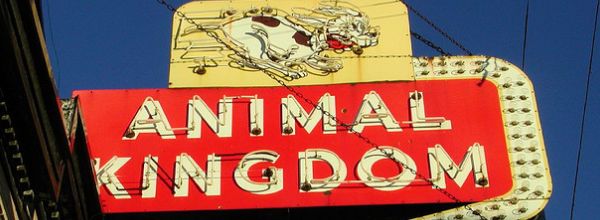I was first introduced to Conrad Waddington’s epigenetic landscape when reading ‘The epigenetic revolution’, a fantastic introduction to epigenetics, and in my opinion, a must read for anyone who is looking for an entertaining and enjoyable introduction to this fascinating field.
In his model, Waddington likens the process of cellular differentiation to a marble, which represents a pluripotent cell, on top of a hill [1]. The hill contains many paths or troughs that the marble can roll down and each path will eventually lead to a distinct final differentiated state, such as a blood cell or a neuron. As the ‘marble’ moves down the hill the paths and final destinations available become more limited, representing the increased differentiation of the cell. This model provides us with an extremely simple visualisation for a highly complicated process and conveys several important points about differentiation, such that as a cell moves towards its final differentiated state, represented by the movement down the hill along an increasing restricted path, its potential to become anything diminishes. In addition, mutations which alter the troughs down the slope will have an impact on the differentiation of the cell.
One thing which is striking about this model of differentiation, apart from its ability to convey such a complicated topic with relative ease, was the fact that it was published over 50 years ago, before many of the important discoveries which are now central to our understanding of epigenetics and developmental biology. Yet this model is so elegant and so forward thinking that it has survived and held true for more than half a decade.
Not long after the publication of this model in a collection of essays by Waddington in 1957 entitled ‘The strategy of the genes’, John Gurdon made the discovery that the nucleus of a differentiated adult cell retains all the genetic information required to become any cell in the body [2]. Before this monumental discovery it was unclear whether cells lost genetic information as they became differentiated or if genes were simply switched off. Gurdon demonstrated that differentiated cells retain their complete genetic material through nuclear transfer experiments in Xenopus, whereby he transplanted the nucleus of a somatic cell into an unfertilised egg and was able to produce reproductively capable adult frogs.
This finding allows the landscape created by Waddington to become more defined by providing us with the understanding that as the cell moves down the slope the genetic information becomes altered (but not lost) in a way which limits the potential of the cell. One question that arises from this is what happens to the genes to switch them off?
DNA methylation refers to the addition of a methyl group to DNA bases, the most common and well studied is that of 5-methyl cytosine, the methylated form of cytosine. The discovery that DNA could be modified in this way occurred before the publication of Waddingtons epigenetic landscape, in 1948 [3]. However it wasn’t until 1975 that a role for DNA methylation in the control of gene expression was proposed [4]. We now know that DNA methylation is a key process in differentiation and provides the mechanism by which many genes are switched off as a cell moves down the epigenetic landscape.
From Waddington’s model we can see that cells move from a state of pluripotency to a differentiated state by moving down the slope, but can a cell which is fully differentiated move back up the slope and become dedifferentiated? Indeed we know from the nuclear transfer experiments of Gurdon that this can happen, at least at the level of the nucleus, but the question is how? What happened when the DNA from a differentiated nucleus was transplanted into the unfertilised egg which allowed the development into an adult frog?
The answer to how to dedifferentiate, or reprogram, a differentiated somatic cell has only been answered relatively recently. Less than a decade ago Kazutoshi Takahashi and Shinya Yamanaka published groundbreaking work in Cell showing that just four factors, now fondly referred to as the Yamanaka factors, are required to induce a differentiated cell to become a pluripotent cell or iPS cell (induced pluripotent stem cell)[5]. These factors were the transcription factors Oct4, Sox2, Klf4 and c-Myc and provided the answer to how a differentiated cell, at the bottom of the path, can be pushed back up the hill and become a pluripotent cell. This work earned Yamanaka, along with John Gurdon, the 2012 Nobel Prize in medicine.
More than half a century has passed and Conrad Waddington’s epigenetic landscape is still used and relevant today despite the leaps and bounds that have been made in the field of epigenetics.
So what about this man enabled him to create a model so ahead of its time? Part of it I have no doubt was due to the fact he was a polymath, that is he didn’t stick to one restricted field but pursued interests in a range of fields including Geology, Palaeontology, Philosophy and Art. His eclectic pursuits gave him a unique vantage and minimised the narrow view that often accompanies specialisation, a luxury which has all but disappeared in the landscape of science. In addition to his groundbreaking epigenetic landscape he coined the term epigenetics, although its definition has since become more restricted, and also introduced the concept of canalisation, that is the buffering of genetic and environmental factors to maintain a phenotype.
The groundbreaking ideas generated by Waddington can’t help but make one wonder if specialisation is damaging to scientific discovery. Perhaps in order to help promote scientific progress we should be encouraging individuals to pursue a wider range of interests and subjects rather than become increasing specialised.
[1] Waddington, C. H. The strategy of the genes. A discussion of some aspects of theoretical biology. With an appendix by H. Kacser. London: George Allen & Unwin, Ltd., (1957).
[2] Gurdon, J. B., Elsdale, T. R., and Fischberg, M. Nature 182 (1958).
[3] Hotchkiss, R. D. Journal of Biological Chemistry 175(1), 315–332 (1948).
[4] Holliday, R. and Pugh, J. E. Science 187(4173), 226–232 (1975).
[5] Takahashi, K. and Yamanaka, S. cell 126(4), 663–676 (2006).





